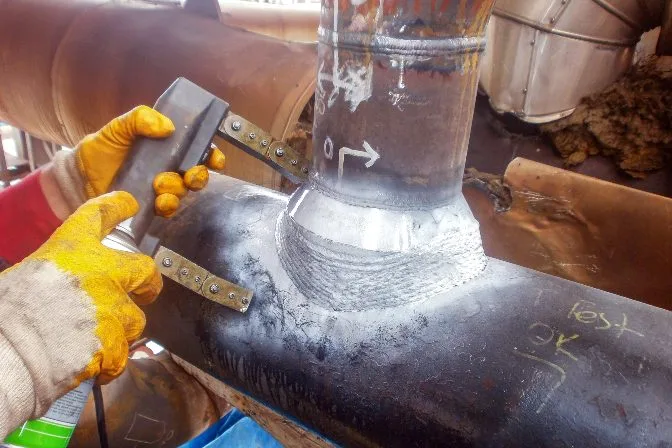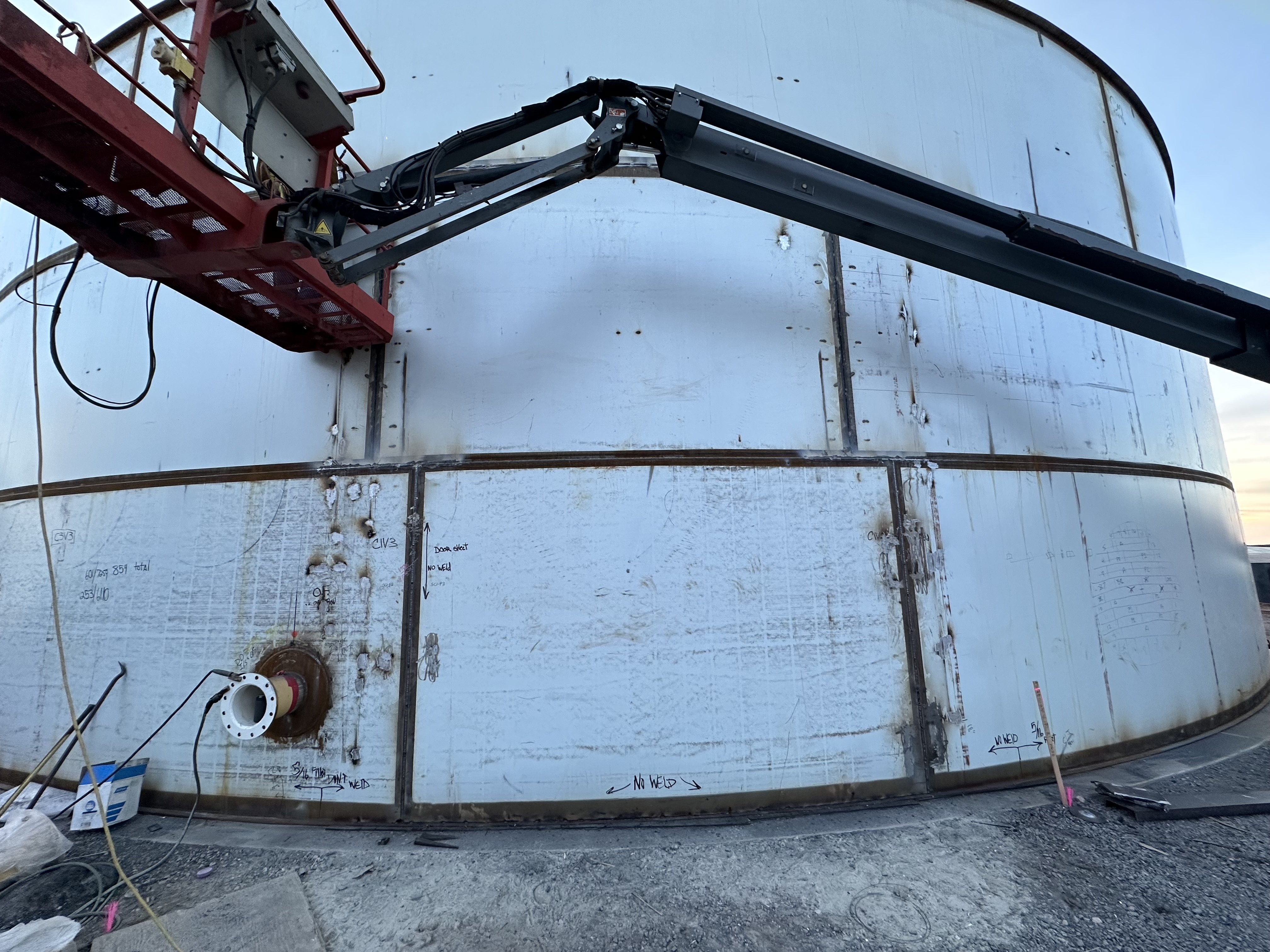Comprehensive Overview to Effective Container Welding Inspection Techniques and Best Practices for Quality Assurance
In the world of tank welding, strenuous assessment techniques are extremely important for securing structural honesty and making sure conformity with sector policies. As we discover these necessary components, it comes to be clear that a positive examination method is not just helpful, but crucial for operational success in settings dealing with harmful materials.
Relevance of Storage Tank Welding Examination

Tank welding assessment functions as a preventative measure, identifying possible flaws such as cracks, porosity, or incorrect joint penetration before they rise right into major problems. Normal inspections not only adhere to sector policies and requirements yet also improve the long life of the containers, reducing the requirement for expensive fixings or substitutes.

Visual Inspection Techniques
Employing systematic visual evaluation techniques is essential for evaluating the high quality and stability of welded joints in tanks. This method functions as the initial line of protection in recognizing possible flaws such as fractures, undercuts, and inadequate infiltration. The examiner should approach the job with a keen eye, utilizing appropriate tools like multiplying glasses, flashlights, and mirrors to boost exposure.
During the inspection procedure, the assessor ought to evaluate the weld account, ensuring it follows specified criteria and guidelines (Tank Welding Inspection). This includes examining the grain width, height, and blend with the base product. Examiners ought to also pay close focus to the bordering areas for indicators of thermal distortion or contamination that might affect the weld's efficiency
Paperwork of findings is essential; assessors must tape-record any kind of abnormalities, classifying them by seriousness for more examination. This systematic strategy not only help in instant defect recognition however additionally adds to long-term quality control by making certain compliance with sector requirements. Normal training and calibration of visual inspection methods further improve the reliability of evaluations, ultimately causing safer and a lot more durable storage tank frameworks.
Non-Destructive Checking Approaches
Non-destructive testing (NDT) approaches are frequently utilized in container welding evaluations to analyze the integrity of bonded joints without endangering their structural stability. These techniques are crucial for recognizing defects such as fractures, gaps, and inclusions that might bring about devastating failings if left undetected.
Typical NDT methods include ultrasonic screening (UT), which makes use of high-frequency acoustic waves to discover inner flaws; radiographic testing (RT), utilizing X-rays or gamma rays to picture weld frameworks; and magnetic particle testing (MT), which exposes surface area and near-surface stoppages in ferromagnetic materials (Tank Welding Inspection). Liquid penetrant testing (PT) is likewise extensively made use of, with the ability of spotting surface-breaking problems by using a fluorescent or shade comparison color
Each NDT approach has its specific applications and advantages, making you could try this out it important for examiners to choose the proper strategy based upon the product and the kind of weld being reviewed. The assimilation of these NDT approaches into the inspection procedure enhances the overall quality assurance framework, guaranteeing that welded tanks meet safety and performance standards. Eventually, NDT plays an important function in preserving the stability and durability of tank structures in different industrial applications.

Documents and Coverage
Making certain detailed documents and coverage throughout container welding examinations is essential for keeping conformity with sector requirements and assisting in efficient communication among stakeholders. Proper documentation serves as a thorough document of assessment tasks, find more findings, and any corrective activities taken throughout the welding procedure. This info is vital not only for quality control yet likewise for audits and regulative reviews.

A well-structured inspection record must include details such as the day of evaluation, names of inspectors, welding treatments utilized, materials made use of, and any type of discrepancies from developed criteria. Furthermore, photographs and layouts can improve the clarity of the record, offering visual context to the searchings for. It is also vital to record any type of non-conformities along with their resolution, making certain that all stakeholders are educated of prospective threats and the steps required to alleviate them.
Furthermore, keeping a centralized data source for all evaluation records enables very easy retrieval and testimonial, fostering a society of transparency and responsibility. By prioritizing careful documents and reporting, companies can not only maintain quality assurance yet likewise reinforce their reputation within the market, ultimately resulting in boosted safety and functional performance.
Continuous Enhancement Practices
Constant renovation techniques are crucial for boosting the top quality and effectiveness of tank welding evaluations. One reliable approach entails routine training and upskilling of evaluation personnel to stay abreast of the latest welding modern technologies and criteria.
Additionally, using data-driven analysis permits companies to track examination outcomes, identify fads, and determine areas for improvement. Using devices such as root cause evaluation can assist in understanding the underlying concerns causing problems, enabling targeted treatments. Furthermore, soliciting responses from assessment teams and stakeholders develops a collective environment that urges innovative remedies.
Integrating advanced modern technologies, such as automatic inspection systems and real-time tracking, can significantly boost the accuracy and rate of evaluations. Normal audits of the evaluation procedures likewise add to a culture of accountability and constant improvement. Eventually, these continuous renovation practices not only raise the top quality of tank welding examinations but additionally contribute to general functional excellence and client satisfaction.
Final Thought
Finally, efficient container welding inspection is critical see here for making certain the structural stability and safety and security of storage systems, especially those taking care of hazardous materials. Using a mix of visual assessment strategies and non-destructive screening methods assists in the very early recognition of defects, thus keeping conformity with industry standards. Furthermore, durable documents and a dedication to continuous improvement improve quality control practices. Ultimately, these measures contribute substantially to functional quality and the avoidance of possible safety hazards.
Comments on “Comprehensive Overview to Tank Welding Inspection for Safety and Quality”